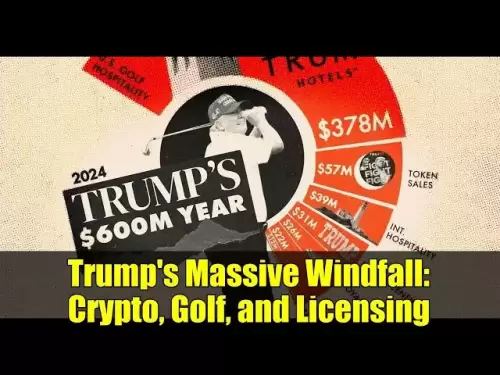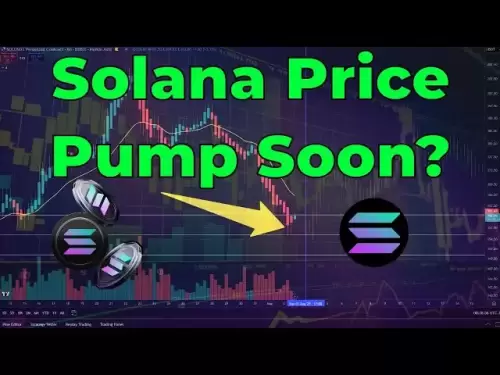-
 Bitcoin
Bitcoin $114400
1.85% -
 Ethereum
Ethereum $3496
2.62% -
 XRP
XRP $2.916
4.75% -
 Tether USDt
Tether USDt $0.9999
0.02% -
 BNB
BNB $751.9
1.74% -
 Solana
Solana $161.2
2.07% -
 USDC
USDC $0.9998
0.00% -
 TRON
TRON $0.3263
1.56% -
 Dogecoin
Dogecoin $0.1987
3.05% -
 Cardano
Cardano $0.7251
4.06% -
 Hyperliquid
Hyperliquid $38.43
4.78% -
 Stellar
Stellar $0.3966
8.00% -
 Sui
Sui $3.431
3.15% -
 Chainlink
Chainlink $16.27
4.03% -
 Bitcoin Cash
Bitcoin Cash $543.3
3.53% -
 Hedera
Hedera $0.2480
8.38% -
 Ethena USDe
Ethena USDe $1.001
0.03% -
 Avalanche
Avalanche $21.38
2.30% -
 Toncoin
Toncoin $3.640
3.41% -
 Litecoin
Litecoin $109.2
3.30% -
 UNUS SED LEO
UNUS SED LEO $8.956
-0.15% -
 Shiba Inu
Shiba Inu $0.00001219
3.22% -
 Polkadot
Polkadot $3.602
3.15% -
 Uniswap
Uniswap $9.153
4.03% -
 Monero
Monero $301.2
3.86% -
 Dai
Dai $0.9999
-0.01% -
 Bitget Token
Bitget Token $4.320
1.80% -
 Pepe
Pepe $0.00001046
4.06% -
 Cronos
Cronos $0.1321
5.83% -
 Aave
Aave $259.0
3.73%
What is the significance of the long lower shadow of the K-line? How to identify the bottom reversal signal?
The long lower shadow on a K-line can signal a bottom reversal in crypto trading, especially if confirmed by other technical indicators like RSI or MACD.
Jun 08, 2025 at 10:13 am
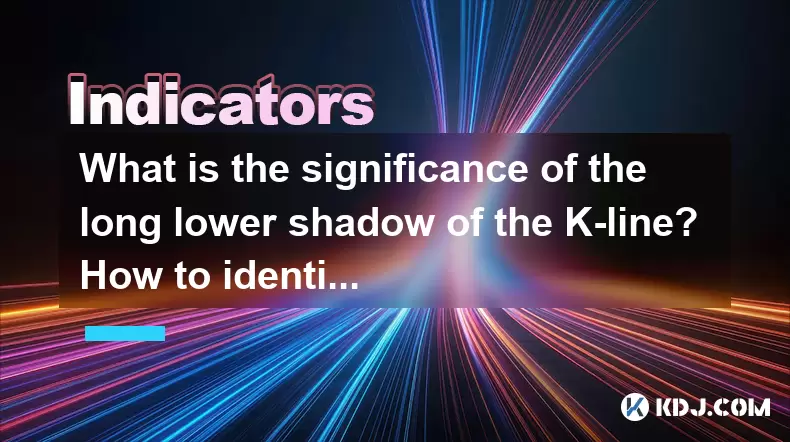
The K-line, also known as the candlestick chart, is a popular tool used by traders in the cryptocurrency market to analyze price movements and identify potential trading opportunities. One of the key components of the K-line is the shadow, which can provide valuable insights into market sentiment and potential trend reversals. In this article, we will explore the significance of the long lower shadow of the K-line and how to identify the bottom reversal signal.
Understanding the K-line and Its Components
Before delving into the significance of the long lower shadow, it is essential to understand the basic structure of the K-line. The K-line consists of a body and two shadows, one at the top and one at the bottom. The body represents the price range between the opening and closing prices, while the shadows indicate the highest and lowest prices reached during the trading period.
- The body of the K-line is typically colored green if the closing price is higher than the opening price, indicating a bullish trend, and red if the closing price is lower than the opening price, indicating a bearish trend.
- The upper shadow extends from the top of the body to the highest price reached during the period.
- The lower shadow extends from the bottom of the body to the lowest price reached during the period.
Significance of the Long Lower Shadow
The long lower shadow of the K-line holds significant meaning for traders, as it can indicate a potential shift in market sentiment and a possible bottom reversal. When a K-line features a long lower shadow, it suggests that the price has dropped significantly during the trading period but has managed to recover and close near the opening price.
- A long lower shadow indicates that sellers initially dominated the market, pushing the price down to a new low. However, as the trading period progressed, buyers stepped in and pushed the price back up, resulting in a close near the opening price.
- This pattern suggests that the selling pressure has been exhausted, and buyers are starting to regain control, potentially signaling a bottom reversal.
Identifying the Bottom Reversal Signal
To identify a potential bottom reversal signal using the long lower shadow of the K-line, traders should look for specific characteristics and confirmations. Here are the key factors to consider:
- The length of the lower shadow should be significantly longer than the body of the K-line. A common rule of thumb is that the lower shadow should be at least twice the length of the body.
- The body of the K-line should be relatively small, indicating that the price has not moved significantly between the opening and closing prices.
- The K-line should appear after a prolonged downtrend, as this increases the likelihood of a bottom reversal.
- Confirmation from other technical indicators, such as the Relative Strength Index (RSI) or the Moving Average Convergence Divergence (MACD), can further strengthen the bottom reversal signal.
Examples of Long Lower Shadow K-lines
To better understand the concept of the long lower shadow and its significance in identifying bottom reversals, let's look at a few examples:
- Hammer pattern: The hammer is a bullish reversal pattern that features a small body and a long lower shadow, with little to no upper shadow. It indicates that the price has fallen significantly during the trading period but has managed to recover and close near the opening price, suggesting a potential bottom reversal.
- Inverted hammer pattern: The inverted hammer is similar to the hammer but features a small body and a long upper shadow, with little to no lower shadow. While it is typically considered a bearish reversal pattern, it can also signal a potential bottom reversal if it appears after a prolonged downtrend.
- Dragonfly doji: The dragonfly doji is a rare pattern that features a small body and a long lower shadow, with no upper shadow. It indicates that the price has fallen significantly during the trading period but has managed to recover and close at the opening price, suggesting a strong potential for a bottom reversal.
Practical Application in Cryptocurrency Trading
When applying the concept of the long lower shadow and bottom reversal signal in cryptocurrency trading, traders should follow a systematic approach to increase their chances of success. Here are the steps to consider:
- Identify a prolonged downtrend: Look for a cryptocurrency that has been experiencing a consistent downward price movement over a significant period.
- Scan for long lower shadow K-lines: Use a candlestick chart to identify K-lines with long lower shadows, ensuring that the length of the lower shadow is at least twice the length of the body.
- Confirm the bottom reversal signal: Look for additional confirmation from other technical indicators, such as the RSI or MACD, to strengthen the potential bottom reversal signal.
- Set appropriate entry and exit points: Once a potential bottom reversal signal is identified and confirmed, set entry and exit points based on your risk management strategy and trading plan.
- Monitor the trade and adjust accordingly: Keep a close eye on the trade and be prepared to adjust your position if the market conditions change or the bottom reversal signal fails to materialize.
Frequently Asked Questions
Q: Can a long lower shadow always be considered a bottom reversal signal?
A: No, a long lower shadow alone is not always a definitive bottom reversal signal. It should be considered in conjunction with other factors, such as the overall market trend, the length of the downtrend, and confirmation from other technical indicators.
Q: How can I differentiate between a long lower shadow and a regular lower shadow?
A: The key difference between a long lower shadow and a regular lower shadow lies in their relative lengths compared to the body of the K-line. A long lower shadow should be at least twice the length of the body, while a regular lower shadow may be shorter or of similar length to the body.
Q: Are there any specific timeframes that are more suitable for identifying long lower shadow K-lines?
A: Long lower shadow K-lines can be identified across various timeframes, from short-term intraday charts to longer-term daily or weekly charts. However, the significance and reliability of the bottom reversal signal may vary depending on the timeframe used. Traders should consider their trading style and goals when selecting the appropriate timeframe for analysis.
Q: Can the long lower shadow be used to identify top reversal signals as well?
A: While the long lower shadow is primarily associated with bottom reversal signals, a similar concept can be applied to identify top reversal signals using the long upper shadow. A long upper shadow indicates that the price has risen significantly during the trading period but has failed to close near the high, suggesting that buying pressure may be weakening and a potential top reversal may be imminent.
Disclaimer:info@kdj.com
The information provided is not trading advice. kdj.com does not assume any responsibility for any investments made based on the information provided in this article. Cryptocurrencies are highly volatile and it is highly recommended that you invest with caution after thorough research!
If you believe that the content used on this website infringes your copyright, please contact us immediately (info@kdj.com) and we will delete it promptly.
- Bitcoin Price Wobbles: Options Analysis Points to Bullish Undercurrent Despite Dip
- 2025-08-04 04:30:12
- Ark Invest, Coinbase, and Bitcoin: Decoding the Crypto Investment Landscape in NYC
- 2025-08-04 04:30:12
- LILPEPE, Cardano, and Shiba Inu: The 2025 Crypto Landscape
- 2025-08-04 04:50:12
- Cold Wallet, Token Rewards, and Crypto Usage: A New Era?
- 2025-08-04 04:50:12
- Navigating the Wild West: Token Unlocks and Altcoin Surges - A Trader's Guide
- 2025-08-04 02:30:11
- AI, Crypto, and the Frontier: Riding the Wave of Innovation
- 2025-08-04 03:50:11
Related knowledge
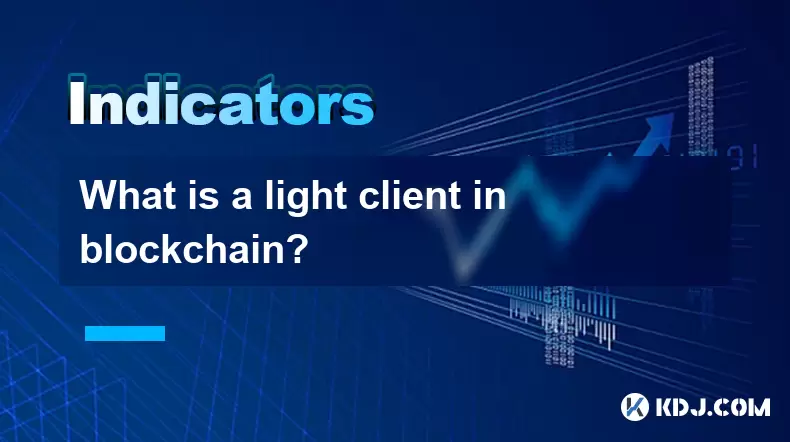
What is a light client in blockchain?
Aug 03,2025 at 10:21am
Understanding the Role of a Light Client in Blockchain NetworksA light client in blockchain refers to a type of node that interacts with the blockchai...
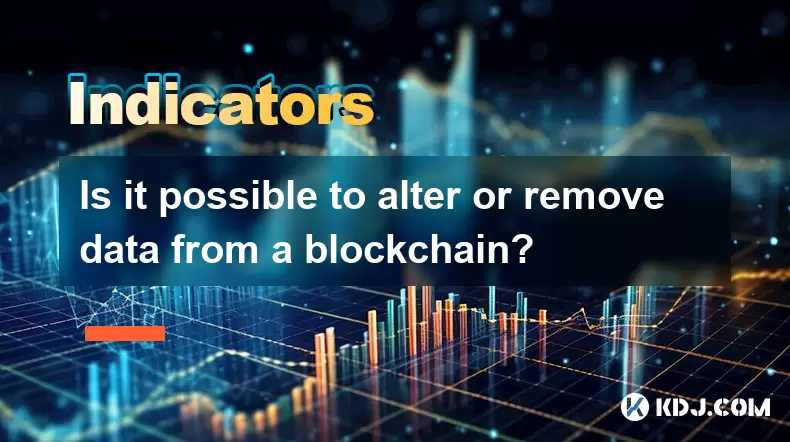
Is it possible to alter or remove data from a blockchain?
Aug 02,2025 at 03:42pm
Understanding the Immutable Nature of BlockchainBlockchain technology is fundamentally designed to ensure data integrity and transparency through its ...
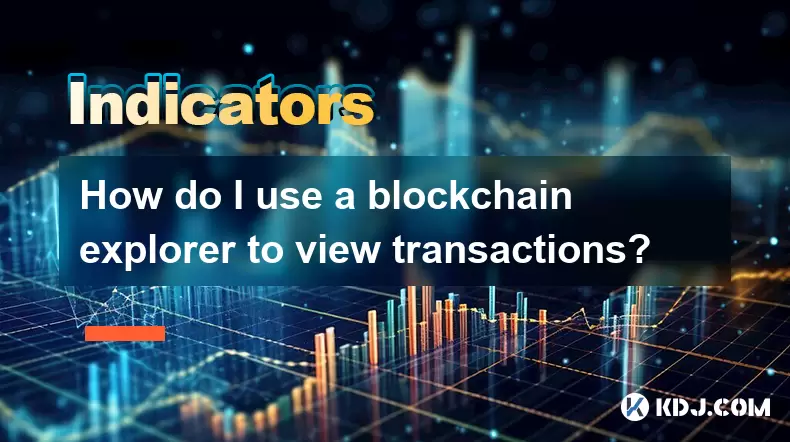
How do I use a blockchain explorer to view transactions?
Aug 02,2025 at 10:01pm
Understanding What a Blockchain Explorer IsA blockchain explorer is a web-based tool that allows users to view all transactions recorded on a blockcha...
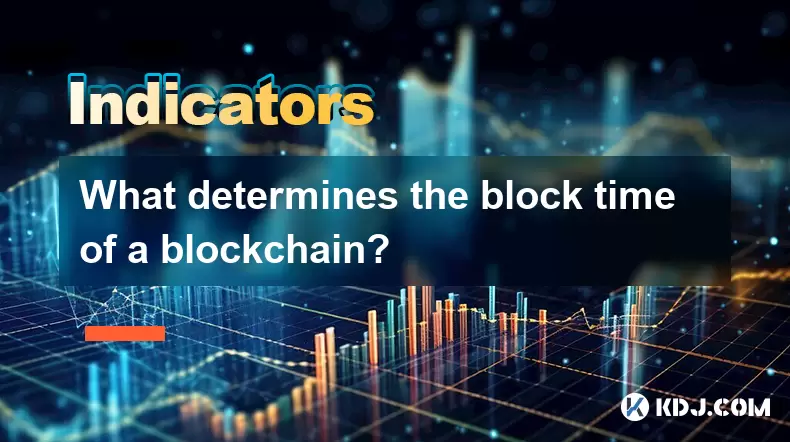
What determines the block time of a blockchain?
Aug 03,2025 at 07:01pm
Understanding Block Time in Blockchain NetworksBlock time refers to the average duration it takes for a new block to be added to a blockchain. This in...
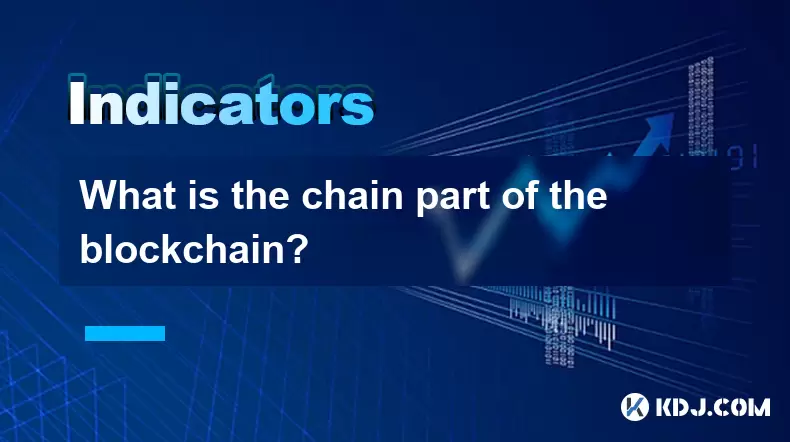
What is the chain part of the blockchain?
Aug 02,2025 at 09:29pm
Understanding the Concept of 'Chain' in BlockchainThe term 'chain' in blockchain refers to the sequential and immutable linkage of data blocks that fo...
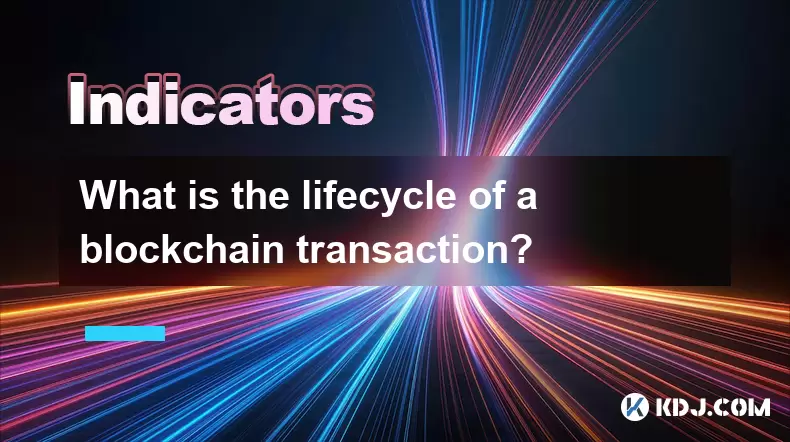
What is the lifecycle of a blockchain transaction?
Aug 01,2025 at 07:56pm
Initiation of a Blockchain TransactionA blockchain transaction begins when a user decides to transfer digital assets from one wallet to another. This ...

What is a light client in blockchain?
Aug 03,2025 at 10:21am
Understanding the Role of a Light Client in Blockchain NetworksA light client in blockchain refers to a type of node that interacts with the blockchai...

Is it possible to alter or remove data from a blockchain?
Aug 02,2025 at 03:42pm
Understanding the Immutable Nature of BlockchainBlockchain technology is fundamentally designed to ensure data integrity and transparency through its ...

How do I use a blockchain explorer to view transactions?
Aug 02,2025 at 10:01pm
Understanding What a Blockchain Explorer IsA blockchain explorer is a web-based tool that allows users to view all transactions recorded on a blockcha...

What determines the block time of a blockchain?
Aug 03,2025 at 07:01pm
Understanding Block Time in Blockchain NetworksBlock time refers to the average duration it takes for a new block to be added to a blockchain. This in...

What is the chain part of the blockchain?
Aug 02,2025 at 09:29pm
Understanding the Concept of 'Chain' in BlockchainThe term 'chain' in blockchain refers to the sequential and immutable linkage of data blocks that fo...

What is the lifecycle of a blockchain transaction?
Aug 01,2025 at 07:56pm
Initiation of a Blockchain TransactionA blockchain transaction begins when a user decides to transfer digital assets from one wallet to another. This ...
See all articles























